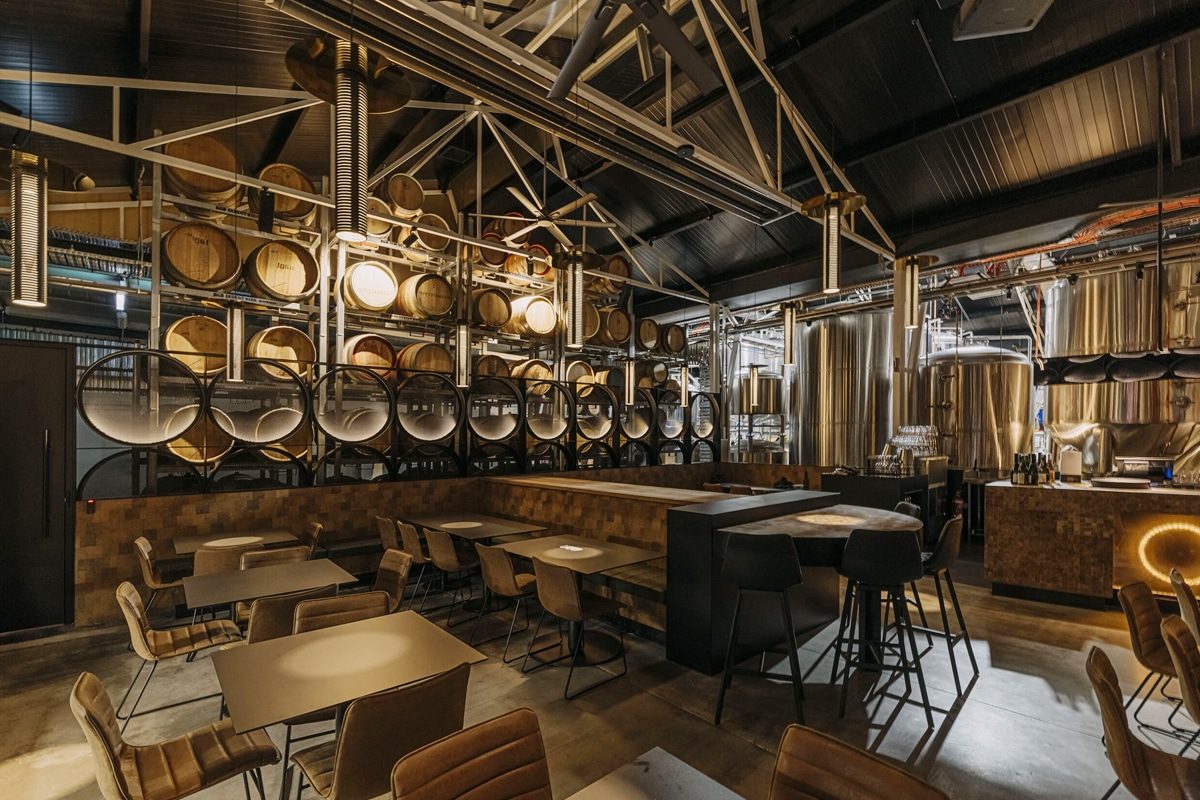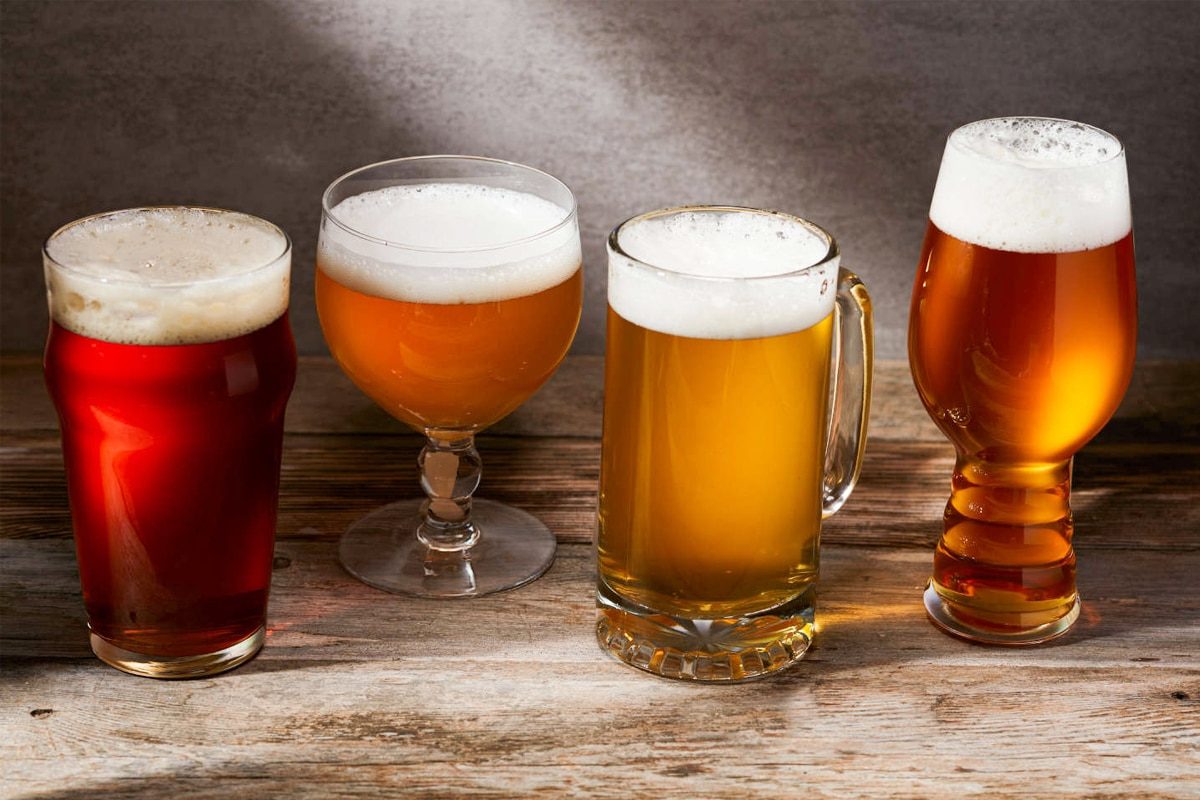
What Are The Common Off-Flavors In Beer?
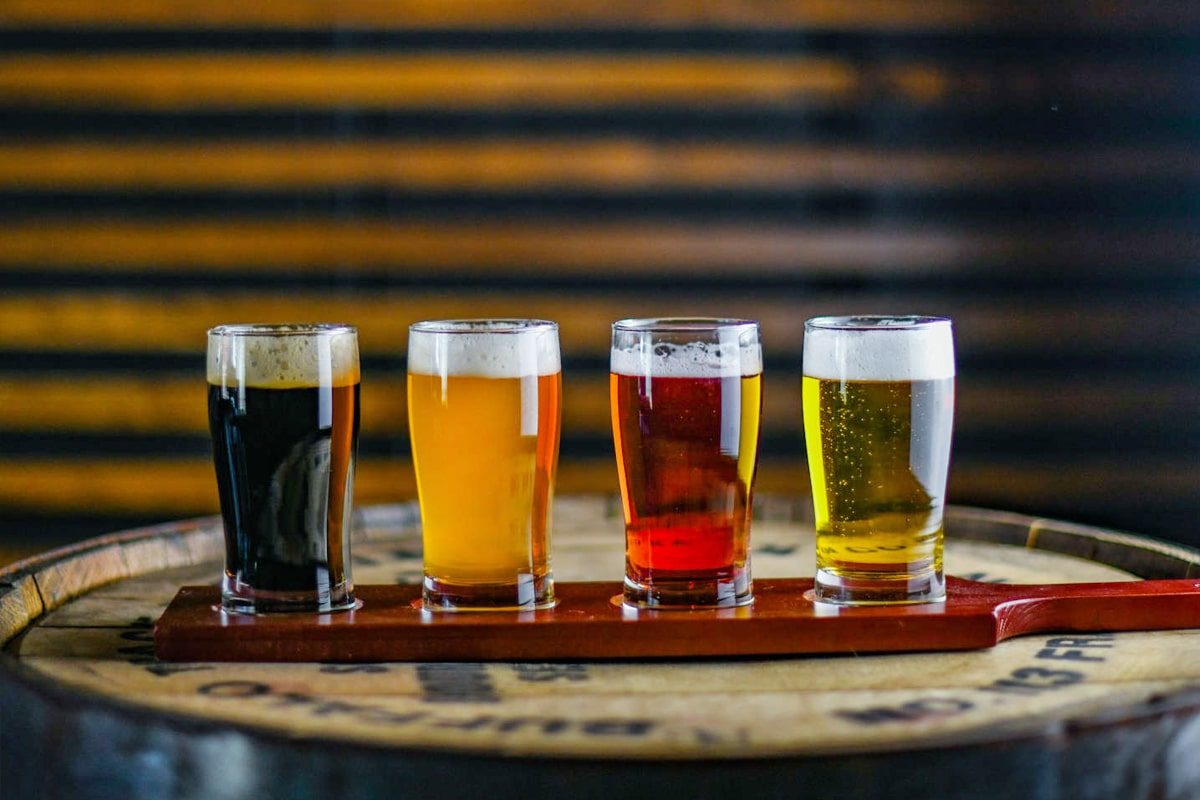
Introduction to Off-Flavors
Chemical Off-Flavors
Chemical off-flavors arise from various reactions that can occur during brewing, fermentation, or storage. These flavors can be due to oxidation, improper use of cleaning agents, or contamination from external sources.
- Oxidation: Oxidation can lead to stale or cardboard-like flavors, often described as tasting like wet paper or sherry. This occurs when beer is exposed to oxygen at any stage of the brewing process, particularly during packaging and storage.
- Chlorophenols: These off-flavors, reminiscent of medicinal or antiseptic notes, typically result from the reaction between chlorine or chloramines in brewing water and phenolic compounds from malt or hops.
- Metallic: A metallic taste, often described as blood-like or tinny, can stem from water with high mineral content, corrosion of brewing equipment, or contamination from metallic objects.
Microbial Off-Flavors
Microbial off-flavors are caused by the presence of unwanted microorganisms, such as bacteria, wild yeast, or mold, which can infect the beer at various stages of production.
- Diacetyl: This off-flavor, characterized by a buttery or butterscotch taste, is primarily produced by certain bacteria and yeast strains during fermentation. It can also be a sign of a bacterial infection if present in high amounts.
- Sourness: Unintended sour flavors can result from infections by lactic acid bacteria or acetic acid bacteria, which produce lactic acid or acetic acid, respectively.
- Phenolic: While some yeast strains naturally produce phenolic compounds that contribute to spicy or clove-like flavors, infections by wild yeast or bacteria can lead to undesirable medicinal or band-aid-like flavors.
Process-Related Off-Flavors
Process-related off-flavors emerge from issues in the brewing process itself, including mashing, boiling, fermentation, and conditioning stages.
- Dimethyl Sulfide (DMS): DMS imparts a cooked corn or cabbage flavor and is often a result of insufficient boiling or slow cooling of the wort, allowing DMS precursors to convert into the compound.
- Astringency: Astringent flavors, characterized by a dry, puckering mouthfeel, can occur due to over-sparging, high pH levels, or the presence of husk materials in the mash.
- Acetaldehyde: This green apple or freshly cut grass flavor results from premature removal of the beer from yeast or inadequate conditioning, as acetaldehyde is an intermediate in the fermentation process.
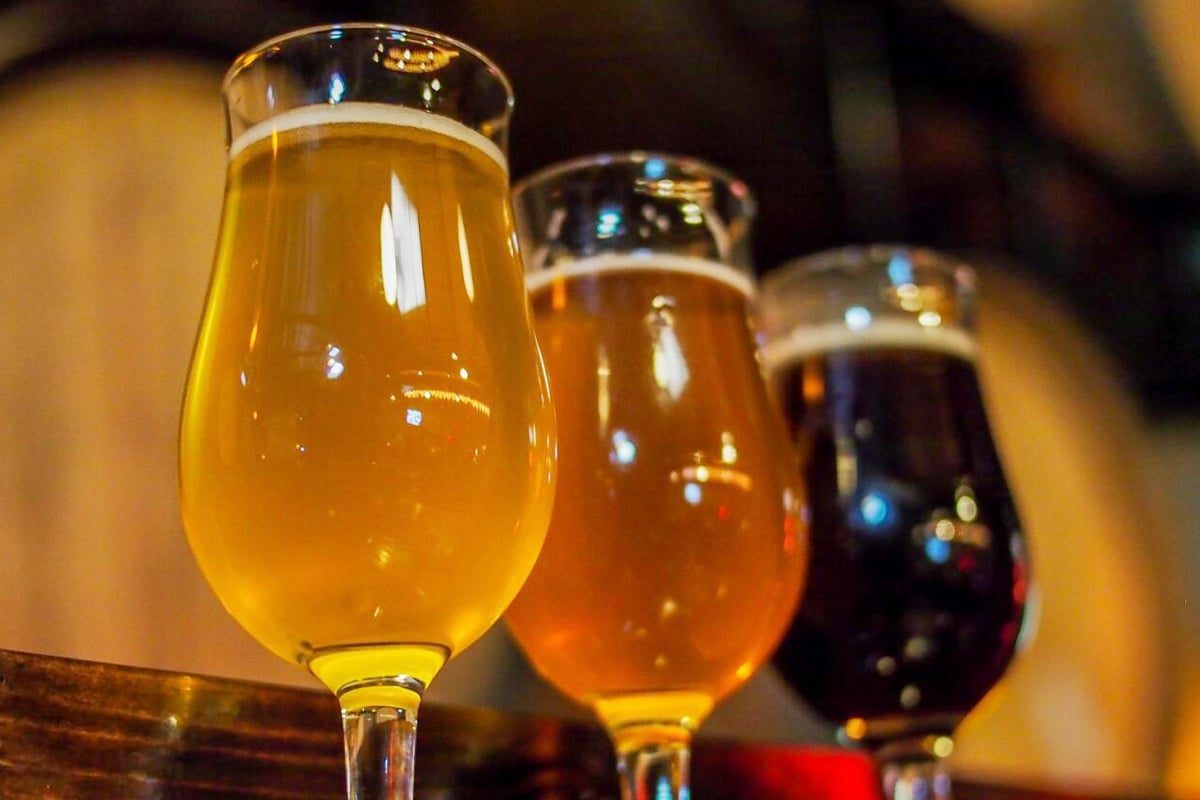
Oxidation
Description
Causes
Oxidation occurs when beer is exposed to oxygen, which can happen at various stages of the brewing, packaging, and storage processes. Key causes include:
- Oxygen Exposure During Brewing: Oxygen can be introduced during the mashing, boiling, or transferring processes if not carefully managed. Even small amounts of oxygen can initiate oxidative reactions that degrade beer quality.
- Packaging Issues: Improper sealing of bottles or cans can allow oxygen to enter, leading to oxidation. Poorly purged kegs or bottling lines that introduce air can also contribute to this problem.
- Storage Conditions: Beer stored in conditions where it is exposed to air, light, or fluctuating temperatures is more susceptible to oxidation. This is especially true for beers stored in clear or green bottles, which do not protect as well against light exposure.
Prevention
Minimizing Oxygen Exposure During Brewing
- Closed Systems: Use closed transfer systems to move wort and beer between vessels to minimize air contact.
- Inert Gas Blanketing: Utilize inert gases like CO2 or nitrogen to blanket beer during transfers and in storage tanks to displace oxygen.
- Gentle Handling: Avoid splashing or vigorous stirring during brewing processes, which can introduce oxygen.
Proper Packaging Techniques
- Purge Containers: Before filling bottles, cans, or kegs, purge them with CO2 to remove oxygen.
- Use Oxygen-Absorbing Caps: Employ oxygen-absorbing bottle caps to reduce the amount of oxygen that can enter the bottle after sealing.
- Sealing Quality: Ensure that bottles and cans are sealed tightly to prevent oxygen ingress.
Optimal Storage Conditions
- Cool and Dark Storage: Store beer in a cool, dark place to slow down oxidative reactions and prevent light exposure, which can exacerbate oxidation.
- Stable Temperature: Maintain a stable temperature to avoid fluctuations that can accelerate oxidative processes.
- Limit Shelf Time: While some beers can benefit from aging, most are best consumed fresh to avoid the adverse effects of oxidation over time.

Diacetyl
Description
Causes
Diacetyl is primarily produced during fermentation as an intermediate compound in the yeast’s metabolic process. Its presence can be attributed to several factors, including:
- Yeast Metabolism: During fermentation, yeast produces diacetyl as a byproduct when it synthesizes amino acids. Healthy yeast cells will typically reabsorb diacetyl later in the fermentation process and convert it into less flavor-active compounds. However, if the fermentation is rushed or if the yeast is unhealthy, diacetyl can remain in the beer.
- Incomplete Fermentation: If the beer is removed from the yeast too early, or if fermentation is interrupted, the yeast may not have enough time to reabsorb and reduce the diacetyl produced during primary fermentation.
- Bacterial Contamination: Certain bacteria, such as Pediococcus and Lactobacillus, can produce diacetyl as a metabolic byproduct. This contamination often occurs due to poor sanitation practices.
Prevention
Healthy Yeast Management
- Adequate Pitching Rates: Ensure that an appropriate amount of healthy, active yeast is pitched at the beginning of fermentation. Under-pitching can stress the yeast and lead to higher diacetyl production.
- Yeast Nutrients: Provide necessary nutrients for the yeast to maintain health and vitality throughout fermentation.
Proper Fermentation Practices
- Complete Fermentation: Allow fermentation to complete fully. Even after the primary fermentation appears to be done, leave the beer on the yeast for an additional few days (known as a diacetyl rest) to ensure that diacetyl is reabsorbed and reduced.
- Temperature Control: Maintain consistent fermentation temperatures appropriate for the yeast strain being used. Diacetyl reduction is more effective at slightly elevated temperatures towards the end of fermentation.
Rigorous Sanitation
- Sanitize Equipment: Thoroughly clean and sanitize all brewery equipment to prevent bacterial contamination. Diacetyl-producing bacteria can thrive in unsanitary conditions, leading to off-flavors in the beer.
- Inspect Ingredients: Ensure all ingredients, particularly yeast, are of high quality and free from contamination.
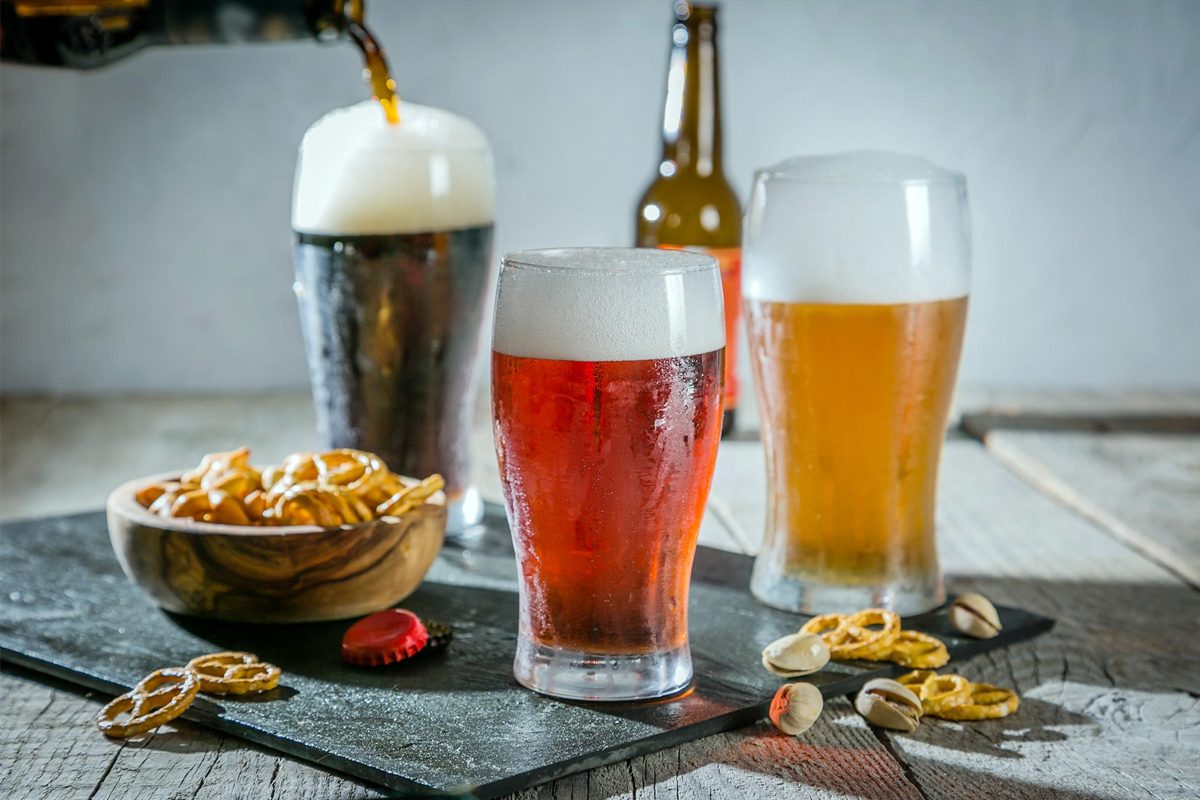
Acetaldehyde
Description
Causes
Acetaldehyde is primarily produced during the yeast’s metabolic process and can be present in beer due to several factors:
- Incomplete Fermentation: During fermentation, yeast converts sugars into ethanol and carbon dioxide, with acetaldehyde being an intermediate compound in this process. If fermentation is stopped prematurely or if the yeast is not given enough time to reabsorb the acetaldehyde, it can remain in the finished beer.
- Yeast Health and Activity: Stressed or unhealthy yeast may not efficiently convert acetaldehyde to ethanol, leading to higher levels of this off-flavor in the beer. Under-pitching yeast, poor yeast nutrition, or inadequate oxygen levels during the initial stages of fermentation can contribute to this issue.
- Oxygen Exposure: Post-fermentation exposure to oxygen can cause acetaldehyde levels to increase. Oxygen can oxidize ethanol back into acetaldehyde, leading to higher concentrations in the finished beer.
Prevention
Complete Fermentation
- Patience: Allow sufficient time for fermentation to complete. Even if the visible signs of fermentation have ceased, it is important to give the yeast time to reabsorb and reduce acetaldehyde levels.
- Diacetyl Rest: Similar to the diacetyl rest, maintaining the beer at a slightly elevated temperature (typically 18-20°C or 64-68°F) for a few days at the end of fermentation can help yeast clean up acetaldehyde and other off-flavors.
Yeast Management
- Healthy Yeast Pitch: Ensure an adequate and healthy yeast pitch at the beginning of fermentation. Using a yeast starter or appropriate pitch rates for the wort gravity can promote robust fermentation.
- Oxygenation: Properly oxygenate the wort before pitching yeast to support healthy yeast metabolism and efficient fermentation.
- Nutrient Addition: Provide necessary yeast nutrients, particularly in high-gravity worts, to support yeast health and activity throughout fermentation.
Minimize Oxygen Exposure
- Closed Transfers: Use closed systems for transferring beer between vessels to minimize oxygen exposure. Purge transfer lines and vessels with CO2 to displace oxygen.
- Proper Packaging: Purge bottles and kegs with CO2 before filling and use oxygen-scavenging bottle caps to reduce the risk of oxidation.
- Avoid Agitation: Handle the beer gently post-fermentation to avoid introducing oxygen, which can convert ethanol back into acetaldehyde.

Phenolic Flavors
Description
Causes
Phenolic flavors are primarily caused by the presence of phenol compounds, which can be introduced or produced during various stages of the brewing process. The main causes include:
- Yeast Strains: Certain yeast strains, especially those used in Belgian ales, wheat beers, and some saisons, naturally produce phenolic compounds as part of their fermentation profile. These strains have a genetic trait known as POF+ (phenolic off-flavor positive) that enables them to produce these flavors.
- Sanitizer Residue: Chlorine-based sanitizers, such as bleach or iodine, can leave residues on brewing equipment if not thoroughly rinsed. These residues can react with phenolic compounds in the malt or hops, leading to medicinal or band-aid-like flavors.
- Water Contamination: Water that contains chlorine or chloramines can contribute to the formation of chlorophenols when it reacts with phenolic compounds from malt and hops during the brewing process.
- Wild Yeast and Bacterial Contamination: Wild yeast strains and certain bacteria can produce phenolic compounds, resulting in off-flavors if they infect the beer at any stage of production.
Prevention
Yeast Management
- Appropriate Yeast Selection: Choose yeast strains based on the desired beer style. Use POF+ yeast strains only for styles where phenolic flavors are appropriate.
- Healthy Fermentation: Ensure a healthy fermentation environment to prevent stress on the yeast, which can sometimes lead to off-flavors.
Sanitation
- Thorough Rinsing: Rinse all brewing equipment thoroughly after using chlorine-based sanitizers to ensure no residue remains. Consider using non-chlorine-based sanitizers like Star San, which do not leave residues.
- Regular Cleaning: Maintain rigorous cleaning and sanitizing protocols for all brewing equipment to prevent contamination by wild yeast and bacteria.
Water Treatment
- Dechlorination: Treat brewing water to remove chlorine and chloramines. This can be done using a carbon filter, boiling, or adding Campden tablets (potassium metabisulfite) to the water before brewing.
- Water Testing: Regularly test water for chlorine and chloramines to ensure they are at acceptable levels for brewing.
Avoiding Contamination
- Controlled Environment: Maintain a clean and controlled brewing environment to prevent the introduction of wild yeast and bacteria. Use airlocks and properly seal fermentation tanks to limit exposure to airborne contaminants.
- Sanitary Transfers: Ensure all transfers of wort and beer are done using sanitized equipment to prevent contamination at any stage.
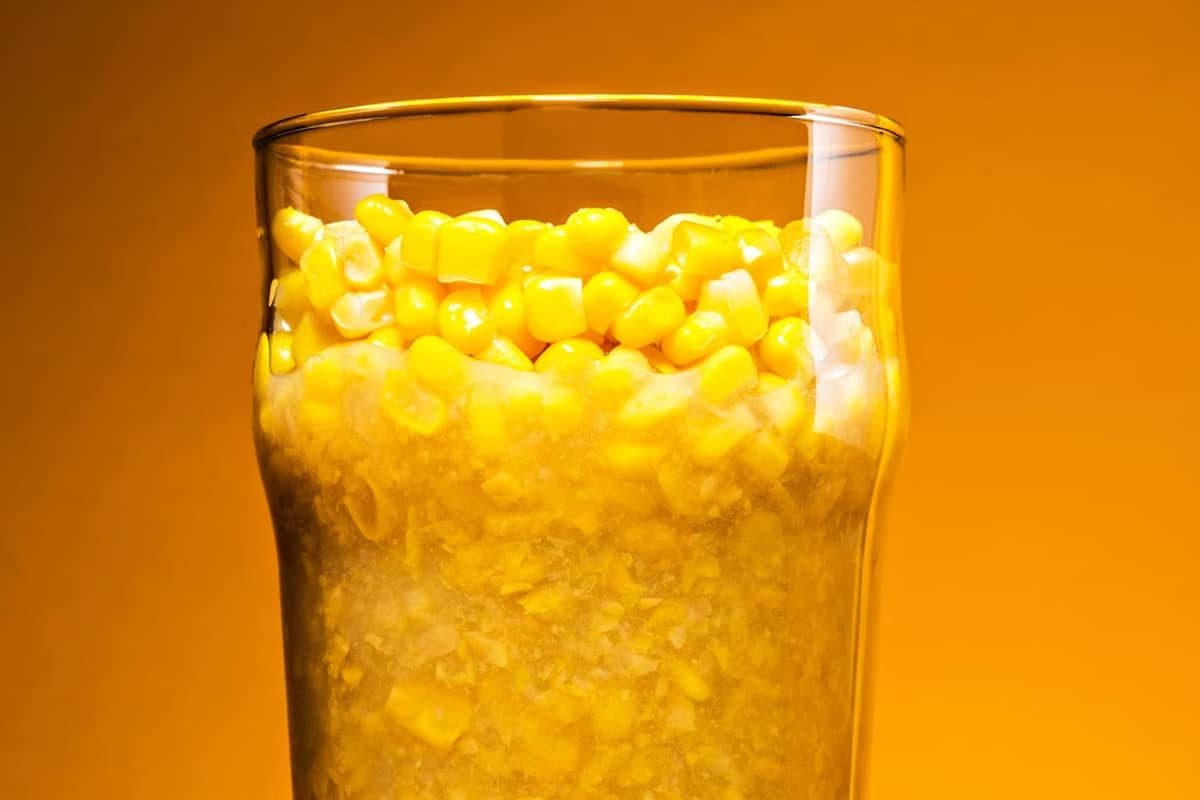
DMS (Dimethyl Sulfide)
Description
Causes
DMS is produced primarily from the thermal decomposition of S-methylmethionine (SMM), a compound found in malt. The main factors contributing to the presence of DMS in beer include:
- Inadequate Boiling: During the boil, DMS and its precursor, SMM, are volatilized and driven off. If the boil is not vigorous enough or not long enough, SMM will not fully convert to DMS or the DMS produced will not be adequately evaporated.
- Improper Wort Cooling: After boiling, if the wort is not rapidly cooled, SMM can continue to convert to DMS as the wort temperature gradually drops. Slow cooling can allow more DMS to remain in the final beer.
- The Lid on the Kettle During Boil: Boiling with the kettle lid on traps DMS vapors, causing them to condense and fall back into the wort. This reintroduction of DMS can result in higher levels in the finished beer.
- Malt Selection: Pale malts and pilsner malts contain higher levels of SMM, making beers brewed with these malts more susceptible to DMS production if not properly managed.
Prevention
Proper Boiling
- Vigorous Boil: Ensure a vigorous, rolling boil for at least 60 to 90 minutes. A vigorous boil helps volatilize and drive off DMS and its precursors.
- Open Kettle: Boil with the kettle lid off to allow DMS to escape into the atmosphere rather than condensing back into the wort.
Rapid Wort Cooling
- Efficient Cooling System: Use an efficient wort chiller to cool the wort as quickly as possible after the boil. Immersion chillers, counterflow chillers, or plate chillers can be effective in rapidly reducing wort temperature.
- Agitation During Cooling: Gently agitating the wort while cooling can help dissipate heat more quickly and reduce the time SMM has to convert to DMS.
Malt Selection
- Pilsner Malt Precautions: When using pale or pilsner malts, pay extra attention to boiling and cooling procedures due to their higher SMM content.
- Alternative Malts: Consider using malt varieties with lower SMM content if DMS is a recurring issue, though this is usually a less common approach.
Kettle Design and Usage
- Kettle Shape: Use a kettle with a wide surface area to enhance evaporation during the boil.
- Proper Ventilation: Ensure good ventilation in the brewing area to effectively remove DMS vapors from the vicinity of the kettle.

Lightstruck (Skunky) Flavors
Description
Causes
The primary cause of lightstruck flavors in beer is exposure to light, particularly UV light, which triggers a photochemical reaction involving hop compounds. The key factors contributing to this issue include:
- UV Light Exposure: UV light from sunlight or fluorescent lighting interacts with isohumulones, the bittering compounds derived from hops, leading to the formation of 3-methyl-2-butene-1-thiol (MBT), the compound responsible for the skunky aroma.
- Packaging in Clear or Green Bottles: Clear and green glass bottles offer minimal protection against UV light, allowing more light to penetrate and cause a photochemical reaction. Brown bottles provide better UV protection, reducing the risk of lightstruck flavors.
- Improper Storage: Storing beer in well-lit areas, such as on open shelves exposed to sunlight or under fluorescent lights, increases the likelihood of developing lightstruck flavors.
Prevention
Use of Brown Bottles
- Brown Glass Bottles: Package beer in brown glass bottles, which provide superior protection against UV light compared to clear or green bottles. Brown bottles block a significant amount of UV light, reducing the risk of the photochemical reaction that leads to skunky flavors.
Packaging Alternatives
- Cans: Consider using cans as an alternative packaging option. The cans are completely opaque and provide excellent protection against light exposure, effectively preventing lightstruck flavors.
- Kegs: For draft beer, use kegs, which also offer complete protection from light exposure.
Proper Storage
- Dark Storage: Store beer in dark, cool places away from direct sunlight and fluorescent lighting. Ensure that storage areas are well-shielded from light sources.
- Covered Shelving: If beer must be displayed on shelves, use covered or shaded shelving units to minimize light exposure.
Controlled Retail Environment
- Educate Retailers: Work with retailers to ensure that beer is stored and displayed in conditions that minimize light exposure. Encourage them to use brown bottles and shaded displays.
- Light-Resistant Packaging: Consider secondary packaging options such as boxes or cartons that offer additional protection from light during storage and transportation.
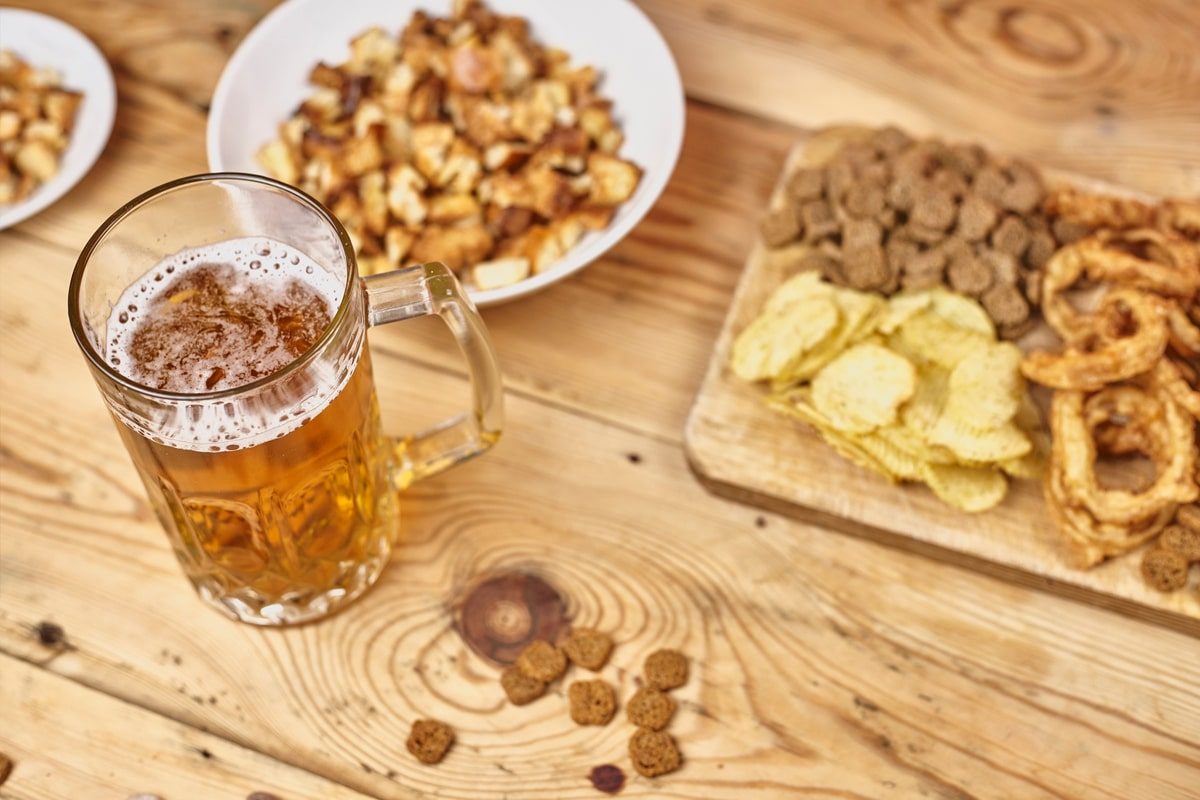
Astringency
Description
Causes
Astringency in beer can be caused by several factors, often related to the brewing process and the handling of raw materials. The primary causes include:
- Tannins: Tannins are polyphenolic compounds found in the husks of malted barley and hop plant material. Over-extraction of tannins during the brewing process can lead to astringency.
- Over-Sparging: Sparging, or rinsing the grain bed to extract sugars, at too high a temperature or for too long can extract excessive tannins.
- High pH: Sparging with water that has a high pH can also lead to the extraction of tannins from the grain husks.
- Grain Handling: Improper milling or crushing of grains can result in the release of tannins.
- Over-Crushing: Crushing the grains too finely can break the husks and release more tannins into the wort.
- Husk Material: Excessive husk material in the mash can contribute to higher tannin levels.
- Hops: Excessive use of certain types of hops, especially those high in polyphenols, can contribute to astringency.
- Hop Utilization: Overuse of hops during the brewing process can lead to astringency if not properly managed.
- Yeast and Fermentation: Some yeast strains can contribute to astringency if they produce high levels of certain compounds during fermentation.
- Yeast Strain Selection: Choosing the wrong yeast strain for the intended beer style can lead to off-flavors, including astringency.
Prevention
Sparging Techniques
- Temperature Control: Maintain sparge water temperature below 170°F (77°C) to minimize tannin extraction. Monitor the temperature closely throughout the sparging process.
- pH Control: Ensure the pH of the sparge water is below 6.0. Adjust the pH of the sparge water if necessary using food-grade acids or by using water with lower alkalinity.
Grain Handling
- Proper Milling: Adjust the grain mill to produce a consistent crush that leaves the husks mostly intact while still allowing for efficient extraction of fermentable sugars. This helps reduce the amount of husk material that ends up in the mash.
- Grain Selection: Use high-quality malt that has been properly stored and handled to minimize the risk of excessive tannins.
Hop Management
- Hop Selection: Select hop varieties with lower polyphenol content if astringency is a concern. Be mindful of the quantities used and consider the timing of hop additions.
- Balanced Hop Additions: Avoid over-hopping and ensure that hop additions are balanced with the overall flavor profile of the beer.
Yeast and Fermentation
- Appropriate Yeast Strains: Choose yeast strains that are suitable for the beer style and that are less likely to produce compounds contributing to astringency.
- Healthy Fermentation: Ensure a healthy fermentation environment with adequate nutrients and oxygen levels for the yeast. Proper yeast management helps prevent the production of off-flavors.
General Brewing Practices
- Sanitation: Maintain rigorous sanitation practices to prevent contamination that can contribute to astringency.
- Water Quality: Use water that is suitable for brewing, with appropriate mineral content and pH levels.
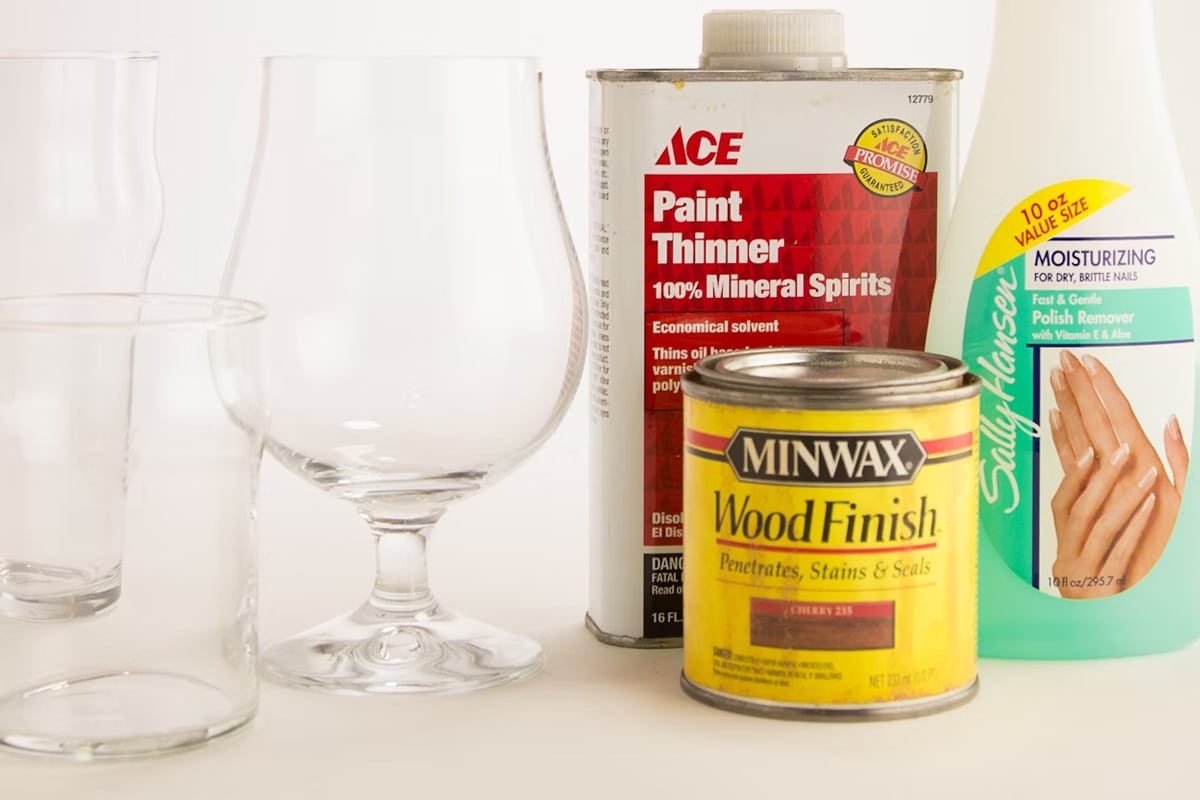
Solvent-Like Flavors
Description
Causes
Solvent-like flavors are primarily caused by the presence of higher alcohols, known as fusel alcohols, which are produced during fermentation. Key factors contributing to the production of these off-flavors include:
- High Fermentation Temperature: Yeast activity increases at higher temperatures, which can lead to the production of excess fusel alcohols. This is particularly problematic in warmer climates or during summer months when fermentation temperatures are not adequately controlled.
- Stressed Yeast: Yeast that is under stress due to inadequate nutrition, high osmotic pressure, or insufficient oxygenation at the start of fermentation can produce higher levels of fusel alcohol. Stressful conditions force yeast to metabolize in ways that lead to the formation of these undesirable compounds.
- Over-Pitching or Under-Pitching Yeast: Incorrect yeast pitching rates can also lead to solvent-like flavors. Over-pitching can result in an overly vigorous fermentation that produces fusel alcohols, while under-pitching can stress the yeast, leading to the same outcome.
- Inadequate Oxygenation: Insufficient oxygenation of the wort before fermentation can cause yeast to struggle, leading to the production of fusel alcohols as the yeast tries to adapt to the low-oxygen environment.
Prevention
Control Fermentation Temperature
- Maintain Proper Temperature: Keep fermentation temperatures within the recommended range for the yeast strain being used. Most ale yeast strains perform best between 60-72°F (15-22°C), while lager yeast strains typically require cooler temperatures, around 45-55°F (7-13°C).
- Use Temperature Control Equipment: Employ temperature control equipment such as fermentation chambers, glycol chillers, or temperature-controlled rooms to maintain consistent fermentation temperatures.
Healthy Yeast Management
- Proper Yeast Pitching Rates: Use appropriate yeast pitching rates based on the wort gravity and volume. This ensures a healthy fermentation without over- or under-pitching.
- Yeast Nutrients: Add yeast nutrients, especially in high-gravity worts, to provide essential nutrients for yeast health and prevent stress.
- Oxygenation: Adequately oxygenate the wort before pitching yeast to ensure a healthy start to fermentation. This can be done by shaking the fermentation tank, using an oxygenation system, or using sterile air pumps.
Fermentation Practices
- Monitor Fermentation Progress: Regularly check the fermentation progress to ensure that it is proceeding as expected. Rapid or sluggish fermentation can be indicators of potential issues that need addressing.
- Avoid Excessive Aeration Post-Fermentation: Limit exposure to oxygen after fermentation has started to prevent oxidative stress on the yeast, which can also lead to off-flavors.
Yeast Health
- Use Fresh Yeast: Use fresh, viable yeast with a high cell count to ensure a strong and healthy fermentation. Yeast starters can help to build up yeast cell counts before pitching.
- Avoid Reusing Yeast Too Many Times: Reusing yeast multiple times can lead to genetic drift and the accumulation of stressed yeast cells, which can increase the risk of off-flavors.

Metallic Flavors
Description
Causes
Metallic flavors in beer can arise from several sources, primarily related to raw materials, brewing equipment, and water quality. The main causes include:
- Water Contamination: Water with high levels of metallic ions, such as iron, copper, or manganese, can impart metallic flavors to the beer. This is often due to the local water supply containing these metals.
- Brewing Equipment: Contact with corroded or improperly maintained brewing equipment can introduce metallic flavors. Equipment made of reactive metals or not properly passivated stainless steel can leach metallic ions into the wort or beer.
- Improper Storage: Storing beer in metal containers that are not designed for beverage storage or are damaged can lead to metallic flavors. This includes certain kegs, cans, or other storage vessels.
- Ingredients: Contaminated ingredients, such as malt or hops, can sometimes contain trace amounts of metals, especially if they are stored improperly or sourced from polluted areas.
Prevention
Water Treatment
- Test Water Supply: Regularly test the brewing water for metallic ions and other contaminants. Water testing kits or services can help identify the presence of iron, copper, and other metals.
- Water Filtration: Use appropriate filtration systems, such as activated carbon filters or reverse osmosis systems, to remove metallic ions from the brewing water. These systems can help ensure that the water used is free from contaminants that could impart off-flavors.
Brewing Equipment Maintenance
- Use Stainless Steel: Use high-quality, food-grade stainless steel equipment for brewing, fermenting, and storage. Stainless steel is less reactive and less likely to corrode compared to other metals.
- Passivation: Regularly passivate stainless steel equipment to maintain its protective oxide layer, which helps prevent corrosion. This involves treating the equipment with an acid solution to restore its resistance to oxidation.
- Inspect Equipment: Regularly inspect brewing equipment for signs of wear, corrosion, or damage. Replace or repair any equipment that shows signs of deterioration to prevent metal from leaching into the beer.
Proper Storage
- Use Appropriate Containers: Store beer in containers specifically designed for beverage storage, such as food-grade stainless steel kegs or lined aluminum cans. Avoid using containers that are not intended for food and beverage use.
- Avoid Damaged Containers: Do not use damaged or corroded storage containers, as these can introduce metallic flavors into the beer.
Ingredient Management
- Source High-Quality Ingredients: Purchase malt, hops, and other ingredients from reputable suppliers to ensure they are free from contamination. Proper sourcing can help avoid trace metal contamination.
- Proper Storage of Ingredients: Store ingredients in a cool, dry place, away from any potential sources of contamination. Proper storage helps maintain the quality and purity of the ingredients.
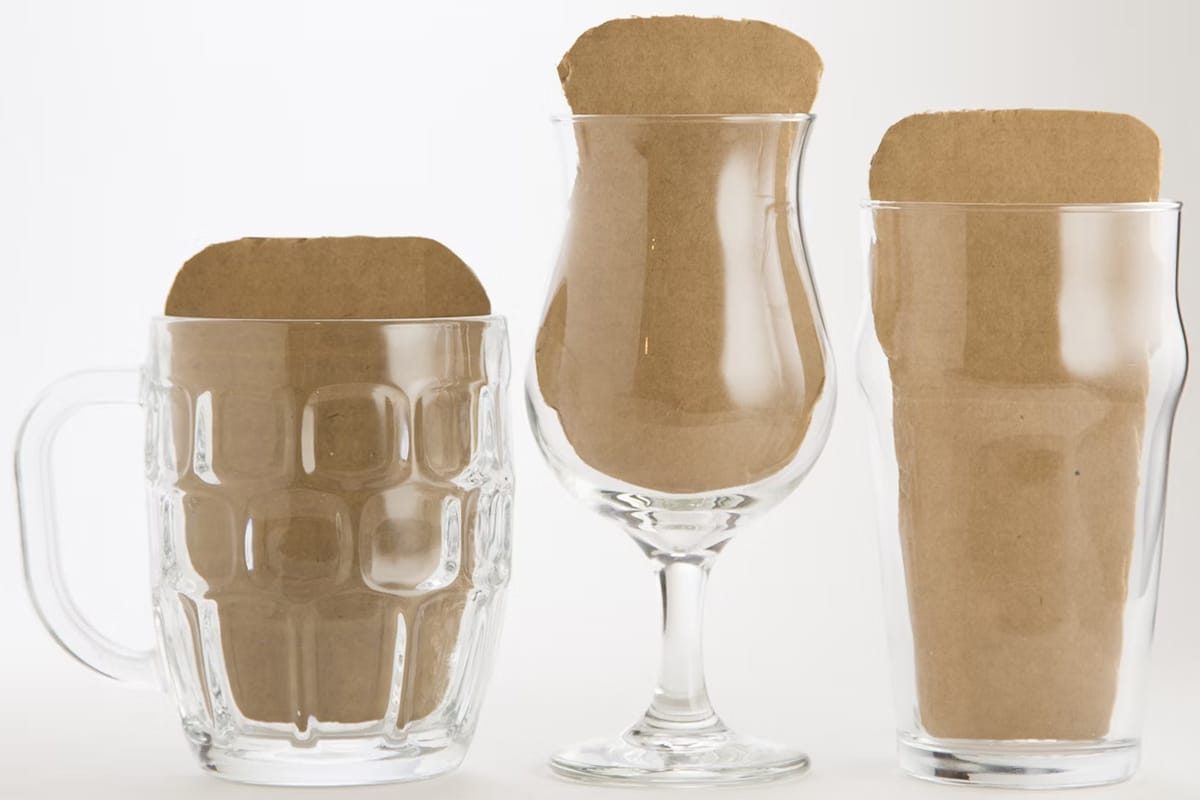
Papery/Cardboard Flavors
Description
Causes
Papery or cardboard flavors are primarily caused by oxidation, which can occur at various stages of the brewing and packaging process. The key factors contributing to these off-flavors include:
- Exposure to Oxygen: Oxygen exposure during brewing, packaging, or storage is the main cause of oxidation. Even small amounts of oxygen can initiate oxidative reactions that degrade the beer’s flavor and aroma compounds.
- Improper Packaging: Inadequate sealing of bottles or cans can allow oxygen to seep in, leading to oxidation over time. This is especially problematic if the packaging process is not carefully controlled.
- Aging: Over time, even minimal exposure to oxygen can lead to oxidative reactions. Beers that are stored for extended periods are more prone to developing papery or cardboard flavors.
- High-Temperature Storage: Storing beer at high temperatures can accelerate oxidation reactions, making the beer go stale more quickly.
Prevention
Minimizing Oxygen Exposure
- Closed Transfer Systems: Use closed transfer systems to move wort and beer between vessels, reducing the risk of oxygen ingress. Purging lines and vessels with CO2 can help displace oxygen.
- Avoid Splashing: Handle the wort and beer gently during brewing and transfer processes to avoid splashing, which can introduce oxygen.
Proper Packaging Techniques
- Purge Containers: Before filling bottles, cans, or kegs, purge them with CO2 to remove any residual oxygen. This helps create a low-oxygen environment for the beer.
- Use Oxygen-Absorbing Caps: Employ oxygen-absorbing bottle caps to reduce the amount of oxygen that can enter the bottle after sealing.
- Ensure Tight Sealing: Verify that bottles and cans are sealed tightly to prevent oxygen ingress. Check for leaks or improper seals during the packaging process.
Optimal Storage Conditions
- Cool Storage: Store beer in a cool, dark place to slow down oxidative reactions. Ideal storage temperatures are between 35-45°F (1-7°C).
- Stable Temperature: Maintain a stable temperature to avoid fluctuations that can accelerate oxidative processes. Avoid exposing beer to high temperatures or direct sunlight.
- Limit Shelf Time: While some beers can benefit from aging, most are best consumed fresh to avoid the adverse effects of oxidation over time.
Control During Brewing
- Boiling Practices: Ensure a vigorous, uncovered boil to drive off oxygen and other volatile compounds. This helps reduce the amount of oxygen dissolved in the wort.
- Post-Fermentation Handling: Avoid unnecessary agitation or transfers after fermentation has completed, as this can introduce oxygen into the beer.

Sulfur Compounds
Description
Causes
Sulfur compounds in beer are primarily produced by yeast during fermentation, but they can also originate from other sources. Key causes include:
- Yeast Strain: Different yeast strains produce varying levels of sulfur compounds. Some lager yeasts, for instance, are known for generating higher levels of sulfur during fermentation.
- Incomplete Fermentation: During fermentation, yeast produces sulfur compounds as byproducts. If fermentation is not allowed to complete properly, these compounds can remain in the beer.
- Stressed Yeast: Yeast that is under stress due to inadequate nutrients, high gravity worts, or improper fermentation temperatures can produce excessive sulfur compounds.
- Water Contamination: Water with high levels of sulfur or sulfate can contribute to sulfur off-flavors. This is more common in areas with certain mineral compositions in the local water supply.
- Bacterial Contamination: Certain bacteria can produce sulfur compounds, particularly if sanitation practices are not rigorously followed.
Prevention
Yeast Management
- Appropriate Yeast Strain: Select yeast strains known for producing low levels of sulfur compounds if this is a concern. Understand the characteristics of the yeast strain being used and choose accordingly for the desired beer style.
- Healthy Fermentation: Ensure a healthy fermentation by pitching an adequate amount of yeast and providing the necessary nutrients. Use yeast starters or pitch sufficient quantities of fresh yeast to avoid stress.
- Proper Fermentation Temperature: Maintain fermentation temperatures within the recommended range for the yeast strain. Avoid temperature fluctuations that can stress the yeast and lead to higher sulfur production.
Complete Fermentation
- Allow Full Fermentation: Give the yeast enough time to complete fermentation and clean up sulfur compounds produced during the process. A diacetyl rest can also help reduce sulfur levels in lagers.
Water Quality
- Water Testing: Test brewing water for sulfur content and other minerals. Use water treatments or filtration systems to remove excess sulfur if necessary.
- Adjust Water Profile: Modify the water profile using brewing salts to balance mineral content and reduce the risk of sulfur off-flavors.
Sanitation
- Rigorous Cleaning: Maintain strict cleaning and sanitizing protocols for all brewing equipment to prevent bacterial contamination. Ensure that all surfaces, containers, and tools are properly sanitized before use.
- Monitor for Contamination: Regularly check for signs of bacterial contamination during fermentation and storage, and take immediate action if contamination is detected.
Wort Preparation
- Boiling Practices: Ensure a vigorous, uncovered boil to drive off volatile sulfur compounds. This helps reduce the concentration of these compounds in the wort.
- Rapid Cooling: Quickly cool the wort after boiling to minimize the risk of sulfur compound formation.
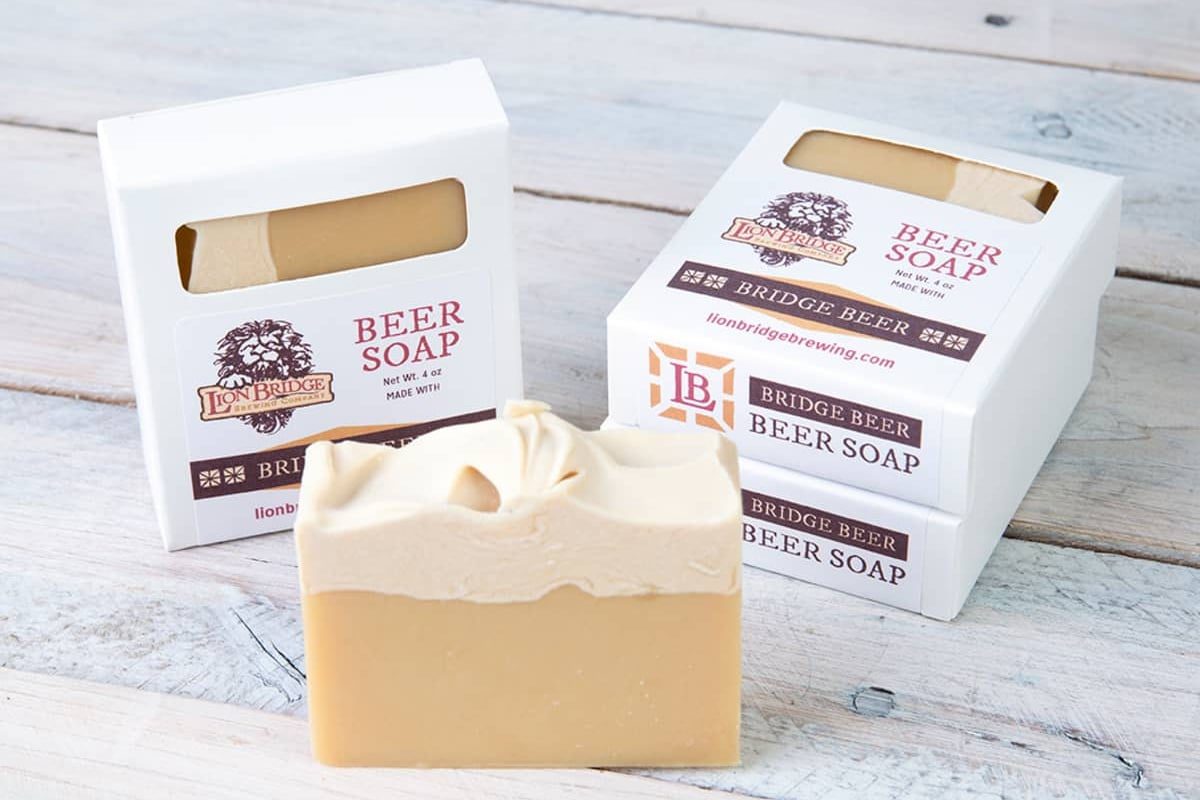
Soapiness
Description
Causes
Soapy flavors in beer can arise from a few key sources, often related to brewing practices and ingredient management. The main causes include:
- Extended Contact with Trub: Prolonged contact of the beer with trub (the sediment at the bottom of the fermenter, consisting of hops, proteins, and other particulates) can lead to the breakdown of fatty acids into soapy compounds.
- Improper Cleaning Practices: Residual cleaning agents or sanitizers not thoroughly rinsed from brewing equipment can impart soapy flavors to the beer. This is especially true for detergents or cleaning solutions that contain surfactants.
- Ingredient Issues: Certain ingredients, particularly those high in fatty acids (such as some specialty malts), can contribute to soapy flavors if not properly managed during brewing.
- Overly Long Conditioning: Beer that is conditioned or aged excessively long, particularly at warm temperatures, can develop soapy flavors as fatty acids break down over time.
Prevention
Minimize Trub Contact
- Racking Practices: Transfer the beer off the trub as soon as primary fermentation is complete. Use a siphon or racking cane to carefully move the beer to a secondary fermenter or directly to the packaging, leaving the sediment behind.
- Sediment Management: Use hop bags or hop spiders to reduce the amount of hop material in the fermenter, and consider using fining agents to help clarify the beer and reduce sediment.
Thorough Rinsing of Equipment
- Clean Rinsing: After cleaning brewing equipment with detergents or sanitizers, rinse all surfaces thoroughly with clean water to remove any residual cleaning agents. Pay special attention to hard-to-reach areas and equipment with intricate parts.
- Use Mild Cleaners: Consider using mild, food-safe cleaners specifically designed for brewing equipment. Avoid household detergents that may leave residues.
Ingredient Management
- Ingredient Quality: Use high-quality ingredients from reputable suppliers to ensure consistency and purity. Be mindful of the types and amounts of specialty malts used, as some can contribute to higher levels of fatty acids.
- Brewing Salt Adjustments: If water composition is a concern, adjust the brewing water profile with brewing salts to balance mineral content and reduce the risk of soapiness from high fatty acid levels.
Proper Conditioning
- Monitor Conditioning Time: Avoid overly long conditioning times, particularly at higher temperatures. Store beer at appropriate temperatures for the style and monitor the aging process to ensure the beer is consumed while fresh.
- Cold Storage: Store beer in a cool, dark place to slow down the breakdown of fatty acids and other compounds that can lead to soapy flavors.
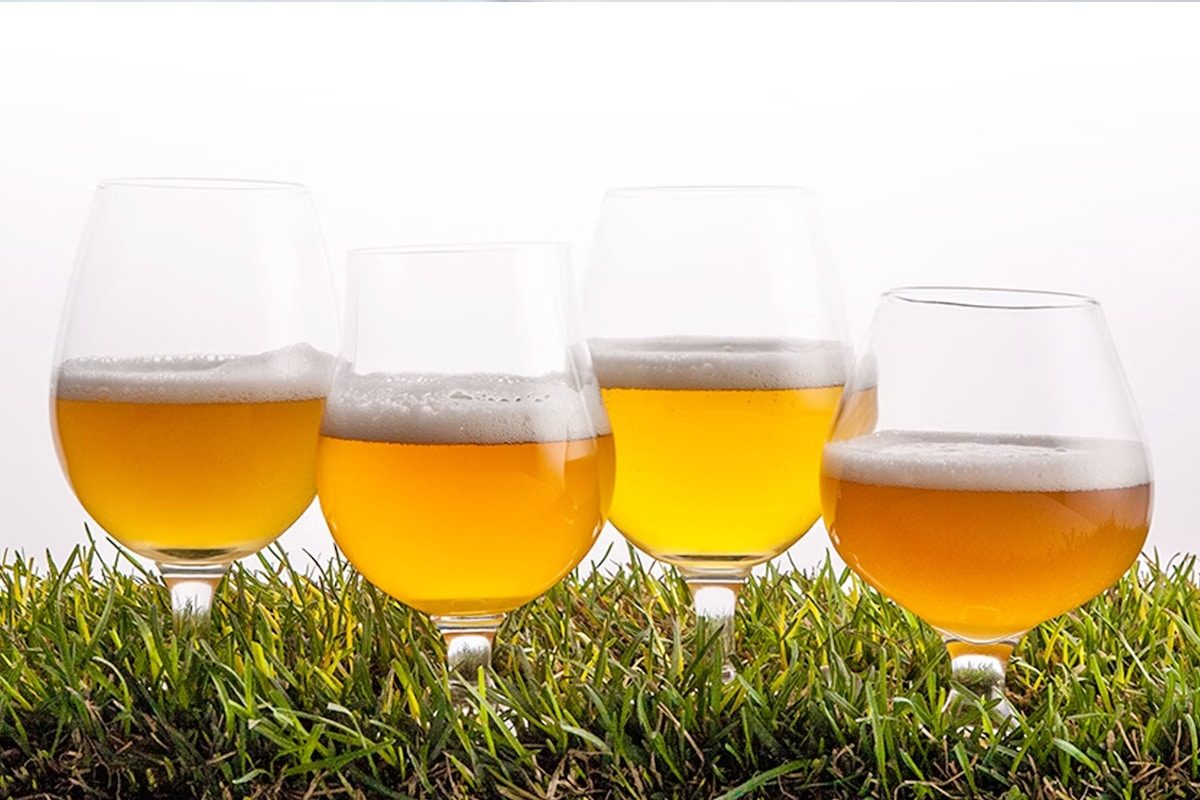
Grassy Flavors
Description
Causes
Grassy flavors in beer can result from several factors, primarily related to ingredient selection and handling. The main causes include:
- Old or Improperly Stored Hops: Hops that are past their prime or stored improperly can develop grassy flavors. Exposure to air, light, and heat can degrade hops, leading to the release of grassy compounds.
- Excessive Use of Dry Hops: Overdry hopping or using large quantities of fresh, green hops can introduce grassy notes, as the chlorophyll and other vegetal compounds in the hop cones or pellets impart their characteristics to the beer.
- Green Malt: Malt that has not been properly kilned can retain higher levels of grassy, green flavors. This is more common with under-modified or poorly processed malt.
- Extended Contact with Vegetal Material: Prolonged contact with hop material, especially in the fermentation tank, can lead to the extraction of grassy flavors. This can occur during dry hopping if hops are left in contact with the beer for too long.
Prevention
Proper Hop Storage
- Store Hops Correctly: Keep hops in a cool, dark place, ideally in vacuum-sealed packages or oxygen-barrier bags to prevent oxidation. Store them in a freezer or refrigerator to maintain freshness.
- Use Fresh Hops: Use hops within their optimal freshness window to avoid the development of grassy flavors. Rotate stock to ensure older hops are used first.
Controlled Dry Hopping
- Moderate Dry Hopping: Use dry hopping techniques that balance flavor contribution without overloading the beer with vegetal material. Consider using hop pellets, which have a lower risk of imparting grassy flavors compared to whole cone hops.
- Limit Contact Time: Limit the duration of dry hopping to avoid excessive extraction of grassy compounds. Typically, 3-7 days of dry hopping is sufficient to impart desirable hop aromas without introducing off-flavors.
Proper Malt Selection
- Choose Quality Malt: Select malt from reputable suppliers that ensure proper kilning and processing. High-quality malt is less likely to have residual grassy flavors.
- Inspect Malt: Inspect malt for signs of green or vegetal characteristics, and avoid using malt that appears under-processed or has an overly grassy aroma.
Brewing Practices
- Avoid Excessive Vegetal Material: Minimize the amount of hop and grain husk material in the wort and fermenter. Use hop bags or spiders to contain hop material during the boil and dry hopping.
- Balance Hop Additions: Balance hop additions throughout the brewing process to avoid an overabundance of vegetal flavors. Consider using a combination of late boil, whirlpool, and dry hopping to achieve the desired hop profile.
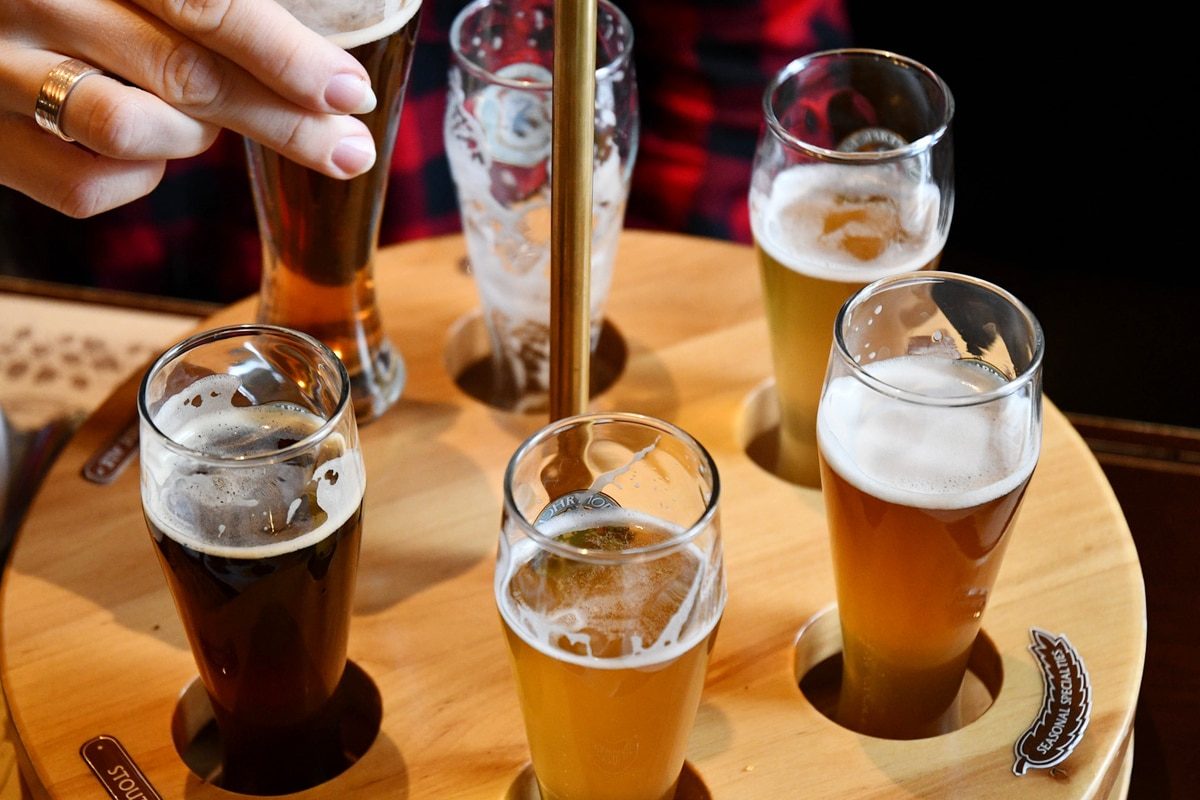
Medicinal/Chlorophenolic Flavors
Description
Causes
Medicinal or chlorophenolic flavors typically result from chemical reactions involving phenolic compounds and chlorine-based substances. The primary causes include:
- Chlorinated Water: Brewing with water that contains chlorine or chloramines (used in municipal water supplies for disinfection) can lead to the formation of chlorophenols when these compounds react with phenols present in malt and hops.
- Sanitizer Residues: Inadequate rinsing of chlorine-based sanitizers (such as bleach) from brewing equipment can leave residues that react with phenolic compounds in the wort or beer, resulting in medicinal flavors.
- Contaminated Ingredients: Some ingredients, particularly those that are not fresh or properly stored, can introduce phenolic compounds that react with chlorine to form chlorophenols.
- Wild Yeast and Bacterial Contamination: Certain wild yeast strains and bacteria can produce phenolic compounds that contribute to medicinal flavors. This is more common in beers that are not properly sanitized or are exposed to environmental contaminants.
Prevention
Water Treatment
- Remove Chlorine and Chloramines: Treat brewing water to remove chlorine and chloramines. This can be achieved by using activated carbon filters, boiling the water before use, or adding Campden tablets (potassium metabisulfite) to neutralize these compounds.
- Test Water Quality: Regularly test the brewing water for chlorine and chloramine levels to ensure they are adequately removed before brewing.
Sanitation Practices
- Use Non-Chlorine Sanitizers: Choose sanitizers that do not contain chlorine, such as iodophor or peracetic acid, which are effective and do not leave residues that can react with phenolic compounds.
- Thorough Rinsing: Ensure all brewing equipment is thoroughly rinsed with clean, dechlorinated water after cleaning and sanitizing to remove any residual sanitizer.
Ingredient Management
- Fresh Ingredients: Use fresh, high-quality ingredients from reputable suppliers to minimize the risk of contamination with phenolic compounds.
- Proper Storage: Store ingredients in cool, dry conditions to prevent the growth of wild yeast and bacteria that can produce phenolic compounds.
Yeast and Fermentation
- Select Appropriate Yeast Strains: Use yeast strains that are known to produce clean fermentations without excessive phenolic compounds, unless brewing a style where these flavors are desirable (e.g., certain Belgian ales).
- Control Fermentation Environment: Maintain a clean fermentation environment to prevent contamination from wild yeast and bacteria. Ensure that all fermenters and related equipment are properly sanitized before use.
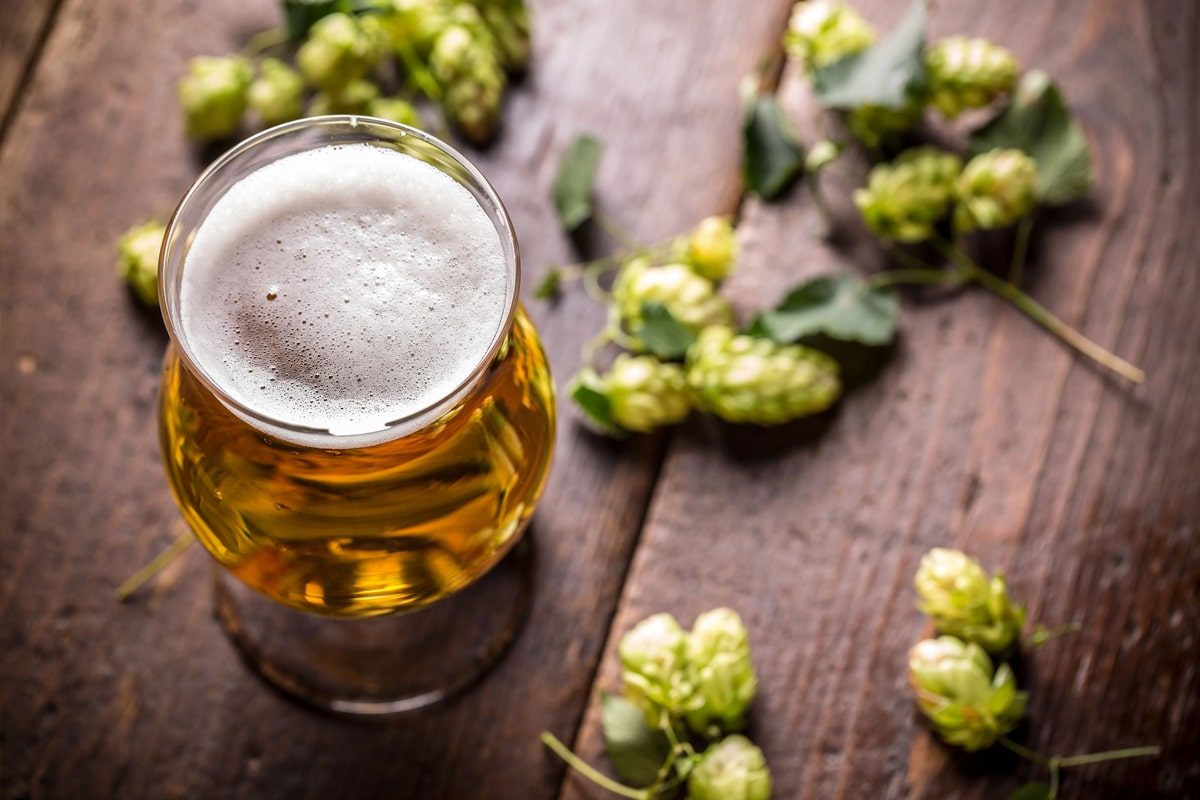
Addressing Off-Flavors
Sensory Analysis
Sensory analysis is a critical tool in identifying and addressing off-flavors in beer. It involves using the senses of taste, smell, and sight to evaluate the beer and detect any undesirable characteristics.
- Training and Calibration: Brewers should undergo regular sensory training to accurately identify specific off-flavors. Calibration sessions, where known off-flavors are spiked into beer, can help develop a consistent and accurate palate.
- Tasting Panels: Establish tasting panels that include brewers, quality control personnel, and other trained individuals. Regularly scheduled tastings can help identify off-flavors early and pinpoint their causes.
- Descriptive Analysis: Use detailed sensory descriptors and standardized evaluation forms to document off-flavors and track trends over time. This data can be invaluable in diagnosing and addressing recurring issues.
- Blind Tastings: Conduct blind tastings to eliminate bias and ensure objective evaluation. This can help in accurately identifying off-flavors without preconceived notions influencing the results.
Process Control
Strict control of the brewing process prevents off-flavors from developing.
- Temperature Control: Monitor and maintain proper temperatures during all stages of brewing, including mashing, fermentation, and conditioning. Temperature fluctuations can lead to the production of off-flavors by stressing the yeast or causing unwanted chemical reactions.
- Fermentation Management: Ensure healthy fermentation by pitching the appropriate amount of yeast and providing adequate nutrients and oxygen. Regularly monitor fermentation progress to ensure it completes fully, allowing the yeast to clean up any undesirable compounds.
- Sanitation Protocols: Implement rigorous cleaning and sanitation protocols to prevent contamination by bacteria and wild yeast. Ensure all equipment, from brewing vessels to packaging lines, is thoroughly sanitized before use.
- Oxygen Control: Minimize oxygen exposure throughout the brewing and packaging process. Use closed systems for transfers, purge tanks and packaging containers with CO2, and ensure tight seals on bottles and cans.
Ingredient Quality
High-quality ingredients are the foundation of great beer. Using fresh, high-quality ingredients can significantly reduce the risk of off-flavors.
- Source Ingredients Carefully: Purchase malt, hops, yeast, and adjuncts from reputable suppliers who provide consistent, high-quality products. Ensure that ingredients are stored and transported under optimal conditions to maintain their quality.
- Regular Inspections: Regularly inspect ingredients upon receipt and before use. Check for signs of spoilage, oxidation, or contamination, such as unusual odors, discoloration, or off-flavors.
- Proper Storage: Store ingredients in cool, dry, and dark conditions to prevent degradation. Hops should be kept frozen or refrigerated in vacuum-sealed or oxygen-barrier bags, while malt should be stored in airtight containers in a cool, dry place.
- Use Fresh Ingredients: Use ingredients within their optimal freshness window. Rotate stock to ensure older ingredients are used first, and avoid using ingredients past their prime.
Equipment Maintenance
Proper maintenance of your brewing equipment can prevent off-flavors and ensure consistent beer quality.
- Regular Cleaning: Clean all brewing equipment thoroughly after each use to remove any residue that could harbor bacteria or wild yeast. Use appropriate cleaning agents and follow manufacturer recommendations.
- Sanitation Practices: Sanitize all equipment that comes into contact with wort or beer, including fermentation tanks, hoses, and packaging equipment. Ensure that all surfaces are adequately sanitized to prevent contamination.
- Routine Inspections: Conduct regular inspections of brewing equipment to identify any signs of wear, corrosion, or damage. Replace or repair any faulty equipment to prevent it from contributing to off-flavors.
- Calibration and Testing: Regularly calibrate and test all measuring and monitoring equipment, such as thermometers, pH meters, and hydrometers. Accurate measurements maintain process control and prevent odors.
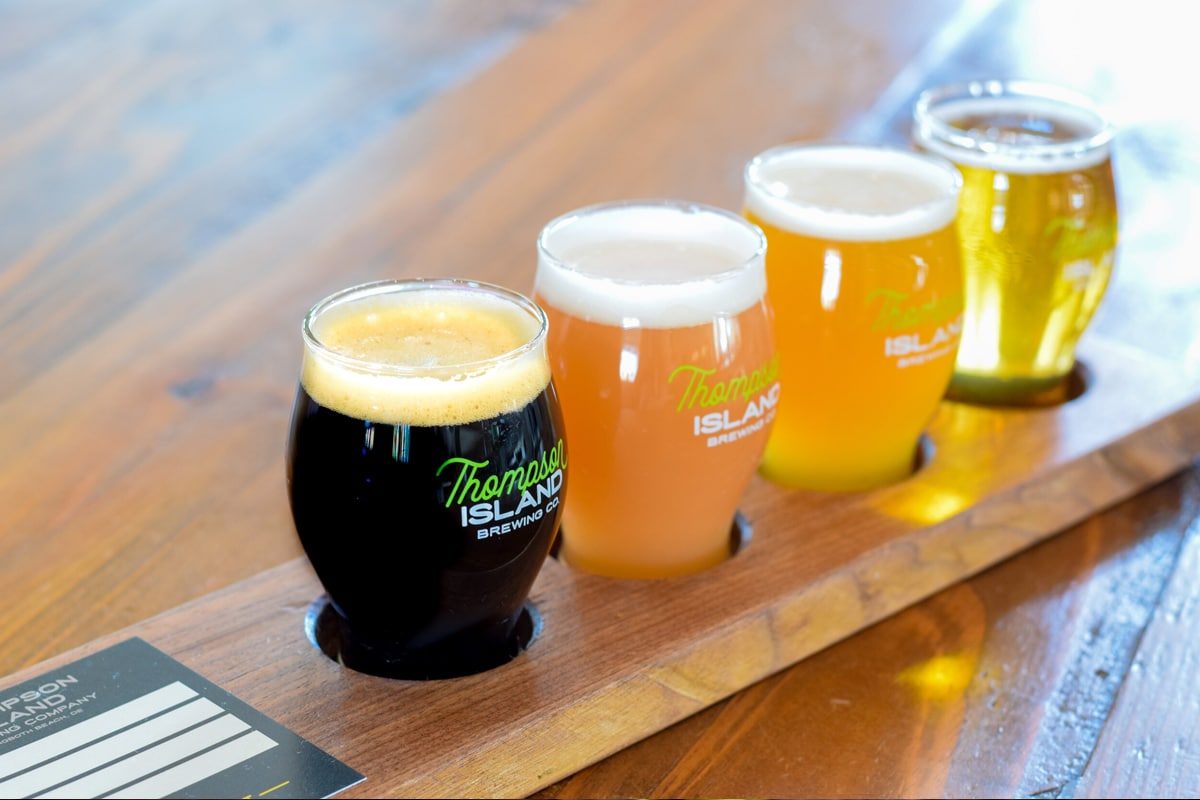
Summary
